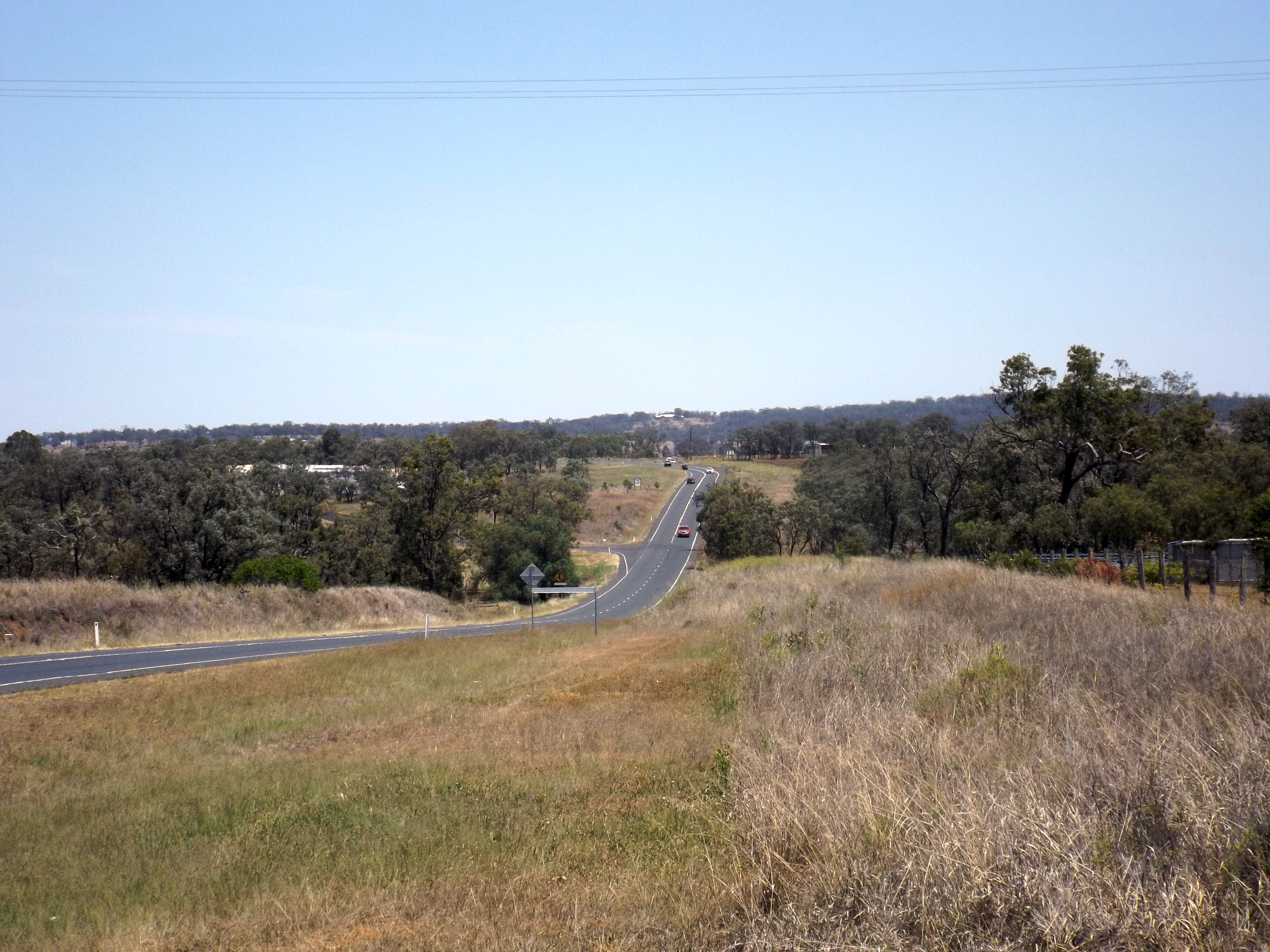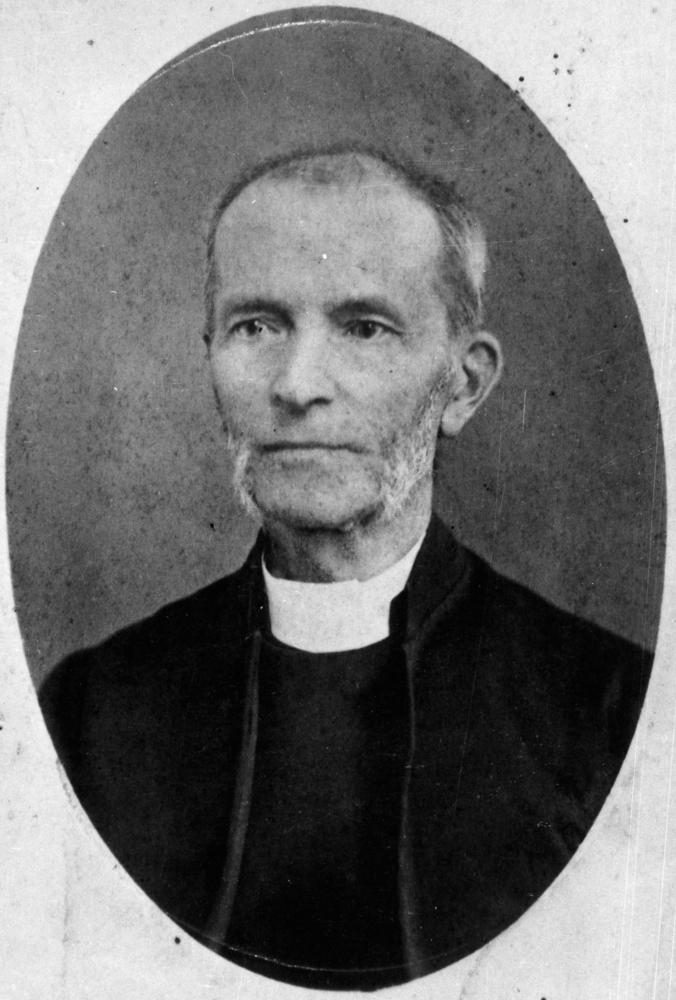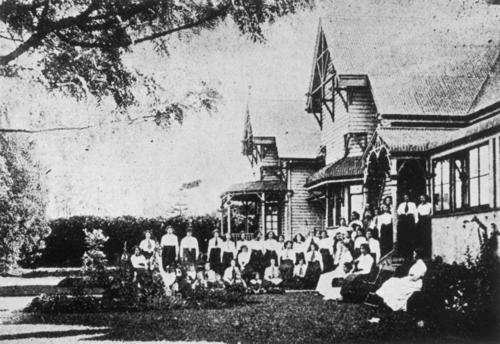|
Newtown, Queensland (Toowoomba)
Newtown is a residential locality in Toowoomba in the Toowoomba Region, Queensland, Australia. In the , Newtown had a population of 10,039 people. Geography Newtown is located immediately west of the Toowoomba city centre. The eastern end of the Gore Highway starts at an intersection with the Warrego Highway in Newtown. History The area was the first outside the city centre to be subdivided for residential purposes in 1865. On 26 February 1899, the foundation stone for St Mary's College was laid by the Roman Catholic Archbishop of Brisbane Robert Dunne. The school opened on 2 October 1899 with 120 students. It was operated by the Christian Brothers until 1997 when the first lay principal was appointed. Spreydon College commenced on 4 February 1908 in the now-heritage listed Spreydon house. Under the patronage of the Presbyterian Church, the school became The Presbyterian Ladies College in January 1915. The primary school moved to the house ''Fairholme'' in East Toowo ... [...More Info...] [...Related Items...] OR: [Wikipedia] [Google] [Baidu] |
AEST
Australia uses three main time zones: Australian Western Standard Time (AWST; UTC+08:00), Australian Central Standard Time (ACST; UTC+09:30), and Australian Eastern Standard Time (AEST; UTC+10:00). Time is regulated by the individual state governments, some of which observe daylight saving time (DST). Australia's external territories observe different time zones. Standard time was introduced in the 1890s when all of the Australian colonies adopted it. Before the switch to standard time zones, each local city or town was free to determine its local time, called local mean time. Now, Western Australia uses Western Standard Time; South Australia and the Northern Territory use Central Standard Time; while New South Wales, Queensland, Tasmania, Victoria, Jervis Bay Territory, and the Australian Capital Territory use Eastern Standard Time. Daylight saving time (+1 hour) is used in jurisdictions in the south and south-east: South Australia, New South Wales, Victoria, Tasm ... [...More Info...] [...Related Items...] OR: [Wikipedia] [Google] [Baidu] |
Gore Highway
The Gore Highway is a highway running between Toowoomba and Goondiwindi in Queensland, Australia. Together with Goulburn Valley Highway and Newell Highway, it is a part of the National Highway's Melbourne- Brisbane link. It is signed as National Highway A39. History The highway is named after two brothers, St. George Richard Gore and Ralph Thomas Gore who established the Yandilla pastoral run in the area (between Pittsworth and Milmerran), through which the road traverses. It was elevated to National Highway status in February 1993, and replaced the Cunningham Highway as the main route between Goondiwindi and Brisbane. Interstate traffic was rerouted through Toowoomba and the Warrego Highway as it presented a less steep gradient than via Warwick and Cunninghams Gap, shortening travel time especially for trucks. It was initially designated State Route 85 until February 1993 when National Highway 85 was proclaimed, splitting State Route 85 into two. In 2005 it was gi ... [...More Info...] [...Related Items...] OR: [Wikipedia] [Google] [Baidu] |
The Glennie School
The Glennie School (formerly the Glennie Memorial School) is a girls' school in Newtown, Toowoomba, Queensland, Australia. It caters for primary and secondary schooling from K-12. It has boarding house facilities and is owned and operated by the Anglican Church. Information In 2018, The Glennie School had a student body of 773 students, 3.6 percent of which were of Aboriginal descent. 160 students were borders. History The first Anglican priest on the Darling Downs was Benjamin Glennie, who spent much of his life raising funds to establish churches and schools for the Darling Downs, including growing and selling vegetables in his garden. He accomplished the construction of four churches in his lifetime but did not establish the schools. However, at his death, he had purchased a block of land in Newtown, Toowoomba and accrued a sum of £1000 towards the construction of the schools. After Glennie's death in April 1900, the Anglican Synod in June 1900 decided to establish ... [...More Info...] [...Related Items...] OR: [Wikipedia] [Google] [Baidu] |
Darling Downs
The Darling Downs is a farming region on the western slopes of the Great Dividing Range in southern Queensland, Australia. The Downs are to the west of South East Queensland and are one of the major regions of Queensland. The name was generally applied to an area approximating to that of the Condamine River catchment upstream of Condamine township but is now applied to a wider region comprising the Southern Downs, Western Downs, Toowoomba and Goondiwindi local authority areas. The name Darling Downs was given in 1827 by Allan Cunningham, the first European explorer to reach the area and recognises the then Governor of New South Wales, Ralph Darling. The region has developed a strong and diverse agricultural industry largely due to the extensive areas of vertosols (cracking clay soils), particularly black vertosols, of moderate to high fertility and available water capacity. Manufacturing and mining, particularly coal mining are also important, and coal seam gas extraction ex ... [...More Info...] [...Related Items...] OR: [Wikipedia] [Google] [Baidu] |
Benjamin Glennie
The Reverend Benjamin Glennie (29 January 1812 – 30 April 1900) was a pioneer Anglican clergyman in the Darling Downs, Queensland, Australia. Early life Benjamin Glennie was born on 29 January 1812 in Dulwich, Surrey, England; his parents were William Glennie, the principal of a private school in Dulwich, and his wife Mary (née Gardiner). He was educated at King's College School, London and then Christ's College where he was awarded a Bachelor of Arts degree in 1847. Priesthood In January 1848, Benjamin Glennie arrived in Sydney in the party of Dr William Tyrrell, first Anglican Bishop of Newcastle. Tyrrell appointed Glennie as deacon to the Moreton Bay district. Although based in Brisbane, Glennie across travelled to Ipswich and to the Darling Downs for services. On 20 August 1848, Glennie presided over the first service of the Church of England on the Darling Downs at the Royal Bull's Head Inn at the town Drayton (now a suburb of Toowoomba). Tyrrell appointed Glenni ... [...More Info...] [...Related Items...] OR: [Wikipedia] [Google] [Baidu] |
Queensland Family History Society
The Queensland Family History Society (QFHS) is an incorporated association formed in Brisbane, Queensland, Australia. History The society was established in 1979 as a non-profit, non-sectarian, non-political organisation. They aim to promote the study of family history local history, genealogy, and heraldry, and encourage the collection and preservation of records relating to the history of Queensland ) , nickname = Sunshine State , image_map = Queensland in Australia.svg , map_caption = Location of Queensland in Australia , subdivision_type = Country , subdivision_name = Australia , established_title = Before federation , established_ ... families. At the end of 2022, the society relocated from 58 Bellevue Avenue, Gaythorne () to its new QFHS Family History Research Centre at 46 Delaware Street, Chermside (). References External links * Non-profit organisations based in Queensland Historical societies of Australia Libraries in Brisbane Fami ... [...More Info...] [...Related Items...] OR: [Wikipedia] [Google] [Baidu] |
Fairholme College
Fairholme College is an independent, day and boarding school for girls, located in Toowoomba, one of Australia's largest provincial cities, in South East Queensland, Australia. Established as Spreydon College in 1908 by sisters Elizabeth, Jessie and Margaret Thomson, the college has a non-selective enrolment policy, and currently caters for approximately 845 students from Kindergarten to Year 12, including 240 boarders in Years 5 to 12. It is the only school associated with the Presbyterian Church of Queensland that is not owned by the Presbyterian and Methodist Schools Association (PMSA), and is one of a small number of Presbyterian schools in Australia. Fairholme is a member of the Alliance of Girls' Schools Australasia (AGSA), the Junior School Heads Association of Australia (JSHAA), the Association of Heads of Independent Schools of Australia (AHISA), and the Australian Boarding Schools' Association (ABSA). History In 1907, sisters Elizabeth, Jessie and Margaret Thoms ... [...More Info...] [...Related Items...] OR: [Wikipedia] [Google] [Baidu] |
East Toowoomba
East Toowoomba is a residential locality in Toowoomba in the Toowoomba Region, Queensland, Australia. In the , East Toowoomba had a population of 5,244 people. Geography East Toowoomba is by road from the Toowoomba central business district. The east and south of the suburb is crossed by the Warrego Highway. History Toowoomba Grammar School opened on 1 February 1877. Toowoomba East State School opened on 17 January 1887. The Toowoomba Preparatory School opened on 31 January 1911. It is now known as Toowoomba Anglican College. Fairholme College opened on 1 July 1917 in East Toowoomba. The school commenced on 4 February 1908 as Spreydon College in the now-heritage listed Spreydon house in Newtown. Under the patronage of the Presbyterian Church, the school became The Presbyterian Ladies College in January 1915. The primary school moved to the house ''Fairholme'' in East Toowoomba in July 1917 with the secondary school following in 1918. Since then the school became unoffi ... [...More Info...] [...Related Items...] OR: [Wikipedia] [Google] [Baidu] |
Oak Lodge And Spreydon
Oak Lodge and Spreydon is a heritage-listed pair of villas at 7 Warra Street & 30 Rome Street, Newtown, Toowoomba, Toowoomba Region, Queensland, Australia. They were designed by architectural firm James Marks and Son and was built from 1890s to . They were added to the Queensland Heritage Register on 1 October 2003. History Oak Lodge and Spreydon were erected in the 1890s as one house facing Warra Street, at the southwest corner of Warra and Rome Streets, Newtown. The house is believed to have been designed by the prominent Toowoomba architectural firm of James Marks and Son, for plumber and timber merchant Robert Walker Filshie. It was originally a large timber house with a steeply-pitched hipped roof and two projecting front gables in the Warra Street elevation. In the early 1920s, the house was divided into two sections, with the southern gabled section and hallway being moved around the corner to face Rome Street, and extended to the west. Robert Filshie was born near ... [...More Info...] [...Related Items...] OR: [Wikipedia] [Google] [Baidu] |
Laity
In religious organizations, the laity () consists of all members who are not part of the clergy, usually including any non-ordained members of religious orders, e.g. a nun or a lay brother. In both religious and wider secular usage, a layperson (also layman or laywoman) is a person who is not qualified in a given profession or does not have specific knowledge of a certain subject. The phrase " layman's terms" is used to refer to plain language that is understandable to the everyday person, as opposed to specialised terminology understood only by a professional. Some Christian churches utilise lay preachers, who preach but are not clergy. The Church of Jesus Christ of Latter-day Saints uses the term ''lay priesthood'' to emphasise that its local congregational leaders are unpaid. Terms such as ''lay priest'', ''lay clergy'' and ''lay nun'' were once used in certain Buddhist cultures to indicate ordained persons who continued to live in the wider community instead of reti ... [...More Info...] [...Related Items...] OR: [Wikipedia] [Google] [Baidu] |
Congregation Of Christian Brothers
The Congregation of Christian Brothers ( la, Congregatio Fratrum Christianorum; abbreviated CFC) is a worldwide religious community within the Catholic Church, founded by Blessed Edmund Rice. Their first school was opened in Waterford, Ireland, in 1802. At the time of its foundation, though much relieved from the harshest of the Penal Laws by the Parliament's Relief Acts, UK Catholics faced much discrimination throughout the newly created United Kingdom of Great Britain and Ireland pending full Catholic emancipation in 1829. This congregation is sometimes referred to as simply "the Christian Brothers", leading to confusion with the De La Salle Brothers—also known as the Christian Brothers (sometimes by Lasallian organisations themselves). As such, Rice's congregation is sometimes called the Irish Christian Brothers or the Edmund Rice Christian Brothers. History Formation of The Christian brothers At the turn of the nineteenth century, Waterford merchant Edmund Rice co ... [...More Info...] [...Related Items...] OR: [Wikipedia] [Google] [Baidu] |
Robert Dunne
Robert Dunne (5 September 1830 – 13 January 1917) was the second Roman Catholic bishop of Brisbane and later he became its first archbishop. Dunne was born in Ardfinnan, County Tipperary, Ireland and was educated at Lismore Grammar School and the Irish College at Rome The Pontifical Irish College is a Roman Catholic seminary for the training and education of priests, in Rome. The College is located at #1, Via dei Santi Quattro, and serves as a residence for clerical students from all over the world. Designated .... After a brilliant collegiate course, Dunne was ordained priest in 1855, then appointed a master at St Laurence O'Toole Seminary, Dublin, of which the Rev. James Quinn was president. When Quinn was made the first bishop of Brisbane he brought Dunne with him. They arrived at Brisbane in May 1861 and Dunne began to carry out the work of diocesan secretary in addition to his duties as a parish priest. Dunne soon became a prominent figure in the young city, and ... [...More Info...] [...Related Items...] OR: [Wikipedia] [Google] [Baidu] |







.jpg)